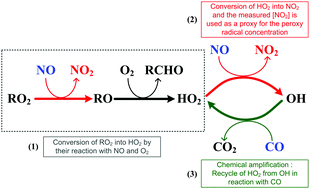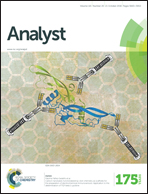Ultra-sensitive measurement of peroxy radicals by chemical amplification broadband cavity-enhanced spectroscopy
Abstract
The PERCA (PEroxy Radical Chemical Amplification) technique, which is based on the catalytic conversion of ambient peroxy radicals (HO2 and RO2, where R stands for any organic chain) to a larger amount of nitrogen dioxide (NO2) amplified by chain reactions by adding high concentrations of NO and CO in the flow reactor, has been widely used for total peroxy radical RO2* (RO2* = HO2 + ΣRO2) measurements. High-sensitivity and accurate measurement of the NO2 concentration plays a key role in accurate measurement of the RO2* concentration. In this paper, we report on the development of a dual-channel chemical amplification instrument, which combined the PERCA method with the incoherent broadband cavity-enhanced absorption spectroscopy (IBBCEAS), for peroxy radical measurements. The IBBCEAS method is capable of simultaneously measuring multiple species with high spectral identification, and can directly measure NO2 concentrations with high sensitivity and high accuracy and without interference from other absorbers. The detection sensitivity of the developed PERCA–IBBCEAS instrument for HO2 radicals was estimated to be about 0.9 pptv (1σ, 60 s) at a relative humidity (RH) of 10%. Considering the error sources of NO2 detection, CL determination, and the radical partitioning in the air sample, the total uncertainty of RO2* measurements was about 16–20%.


 Please wait while we load your content...
Please wait while we load your content...